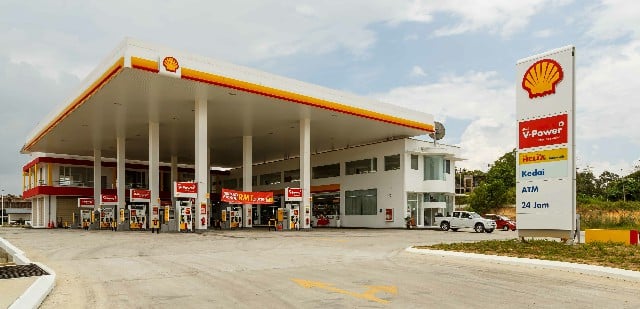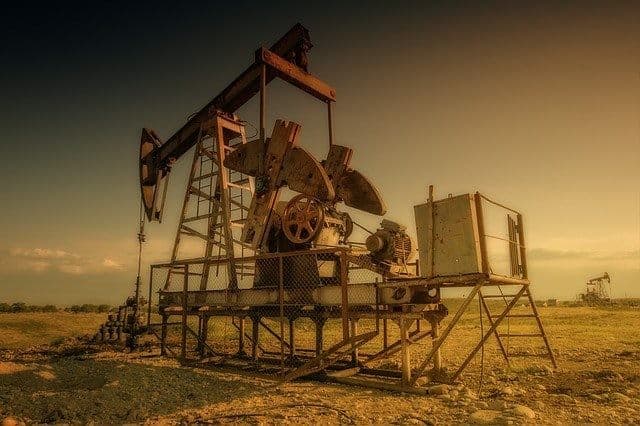How to buy Shell shares (2024) – invest in Shell
Are you considering buying Shell stocks ? In this article, you can read directly how to invest wisely in Shell shares. With the comprehensive analysis and price information, you can make a better investment decision.
Do you want to know where you can buy Shell stocks? In the table below, you can see where you can buy Shell stocks.
| Brokers | Benefits | Register |
|---|---|---|
| Buy Shell without commissions. Your capital is at risk. Other fees may apply. | ||
 | Speculate with CFD's on increasing & decreasing prices of Shell! 82% of retail CFD accounts lose money. | |
 | Benefit from low fees, an innovative platform & high security! | |
 | Speculate on price increases and decreases of Shell with a free demo! |
What is the current stock price of Shell?
Are you curious about the current price of Shell stocks? In the graph below, you can see how Shell shares are performing. You can also start trading Shell stocks directly by using the buy & sell buttons.
Company details of Shell
Below you can find the key company details of Shell.
Analysis of Shell stocks
Before deciding whether to buy or sell Shell shares, it is important to analyse the stock thoroughly. In the overview below, you can see how Shell has performed over the past period.
Stock prices of the last 5 days
In the table below, you can see the stock prices of Shell of the last 5 days:
What will the Shell stock price do in 2025?
Are you curious about what analysts think Shell will do in 2025 and the following years? We have combined the predictions of analysts with data from Alpha Vantage. Keep in mind that this figure is only a prediction about the future price trend of Shell and that this prediction may not come true.
Why can buying Shell stocks be a wise decision?
Oil is a scarce and sought-after commodity
Despite the interest in sustainable fuels, fossil fuels are dominant in our economy. Oil will still be in high demand in the coming years. At the same time, oil is a scarce resource which runs out.
Energy transition
Shell is also involved in the energy transition, which presents interesting new opportunities. The company is seeking new investment opportunities in clean energy sources such as solar, wind, and water power.
In addition, hydrogen is an intriguing emerging market. The European Commission has provided a large budget for hydrogen development. Shell has already invested heavily in hydrogen plants and can therefore potentially make more profit in the future. However, it is important to mention that this may take some time. Currently, hydrogen energy does not generate any revenue yet.
Liquefied natural gas
Shell has also made significant investments in the market of LNG or liquefied natural gas. It is expected that until 2040, there will be no suitable alternatives to natural gas. This means that Shell also has a good position to make more money with this fuel. Compared to coal and oil, natural gas is much better for the environment.
Strong financial performance
Another reason why investing in Shell can be interesting is its strong financial performance. Shell is known for its powerful dividend yield. During the COVID-19 pandemic, Shell reduced its dividend once, but it did not take long for the stock to recover. With an investment in Shell shares, you can also benefit from a relatively stable and high dividend payment.
Control over the process
Another strong point of Shell is that it is active in both upstream and downstream production. This gives Shell more influence over the entire production process and makes it less dependent on other companies.
Falling oil prices
The fossil energy market is regularly in a bear market. For example, during the COVID-19 crisis, the price of oil plummeted, which significantly reduced the profitability of Royal Dutch Shell. This can put pressure on the stock price.
Dividend is not certain
In 2020, for the first time in its history, the company reduced its dividend by a whopping 66%. After the COVID-19 pandemic, the stock recovered and the dividend also increased again. However, this proves that the dividend is not certain even for a company like Shell.
Fossil fuels have a bad reputation
Another risk of investing in Shell stocks is the fact that fossil fuels are no longer considered cool. More and more people are paying attention to sustainable energy sources. When people consider this important for their investment portfolio, they are more likely to sell their Shell shares. This can also further reduce the stock price.
Competition
Shell already faced strong competition from other oil companies. Now that Shell has entered the market for the production of sustainable energy, it has to compete with new parties as well. If Shell fails to develop this sector, the company can be overtaken by new competitors.
What are the biggest competitors of RDS?
- ExxonMobil
- Chevron
- BP
- Total
- ConocoPhilips
How does the Shell stock price develop?
The stock price of Shell is strongly linked to that of the oil price. The company is highly dependent on the current oil price. This is partly due to the fact that the company itself holds large reserves of oil. When the oil price falls, the value of its oil reserves decreases.
In addition, the company’s profits also decline since Shell makes money by selling oil. A lower oil price can even make certain projects unprofitable. For example, a project to search for oil in Alaska was discontinued because it was no longer profitable due to the decreasing oil price.

Before you can invest in Shell by buying stocks, you need to go through a few steps. We’ll briefly look at the steps you need to take to successfully invest in Shell stocks.
Step 1: find a good broker
It is important to select a good broker when investing in Shell stocks. A good broker is a relatively low-cost option. Many people invest through their bank and underestimate the high transaction fees. Take a look at our overview of brokers:
Step 2: Prepare
Before you can buy Shell stocks, it is critical to prepare yourself. Decide how much money you want to invest in Shell stocks. It is advisable to not invest your entire investment in Shell. By diversifying your investments across different stocks, you increase the chance of a positive result.
You can decide to invest gradually or all at once. It is usually best to invest gradually. By investing gradually, you avoid buying Shell stocks at the wrong moment.
Step 3: Place an order on Shells stocks
When you have decided that you want to buy Shell stocks, you can place an order. You can choose between a market and limit order. With a market order, you place the order directly on the market at the best available price. However, during strong volatility, you may be better off using a limit order.
With a limit order, you set a maximum price that you want to pay for the Shell stock. You can also decide to set a stop level. With a stop level you can limit the loss you can incur with your position.
Step 4: Keep an eye on your position
It is wise to track the company in the background. Is the company still performing well? And what about the oil price? It may be wise to buy more shares when the stock is undervalued.

When to buy Shell stocks?
When you are considering buying Shell shares, it is best to keep an eye on the price of oil. There is a strong correlation between the oil price and the Shell stock price.
Of course, this is not the whole story. Besides the price of oil, the company’s financial performance also plays an important role. Favourable business decisions can improve the result. However, if the company fails to maintain a stable dividend policy in the future, this could significantly impact the stock price.
By conducting analyses, you can determine whether it is a good time to buy or sell Shell shares. We have released two courses that can help you analyse the Shell shares:
- Technical analysis: with technical analysis, you can recognize patterns and act accordingly.
- Fundamental analysis: by analysing the underlying figures, you can achieve better results.
Shell’s dividend policy
One of the reasons why Shell is so popular, is its stable dividend policy. Since World War II, the company has paid out a solid dividend every quarter. The amount of this dividend is usually stable and grows regularly.
However, do not focus solely on this absolute dividend: the dividend yield is ultimately much more interesting. The Shell stock price fluctuates strongly. As a result, the dividend yield can range from a few percent in one period to eight percent in another period. Timing is therefore key.
The activities of Shell
RDS or Shell is a Dutch-British multinational company. They belong to the Super majors, the 6 largest state-independent oil companies. In total, Shell has more than 90,000 employees, spread over more than 140 countries worldwide.
Shell is traded on both the Dutch and British stock exchanges. The oil company operates internationally and trades in products such as crude oil, petrol, kerosene, and gas. Furthermore, Shell keeps up with the times by looking for new, sustainable solutions.
What is unique about Shell is that it is involved in multiple steps of the process. Shell extracts oil from the ground, transports it, and then sells it at one of its many gas stations. By controlling the entire process, Shell is powerful within the oil industry.
Recently, Shell decided to leave the Netherlands and relocate its headquarters to the United Kingdom. As a result, the company is no longer called Royal Dutch Shell.

The history of Shell
The basis of Shell can be traced back to 1890 when it was called the Koninklijke Nederlandse Petroleum Maatschappij or Royal Dutch Petroleum Company. The company has been closely working with England since 1907 when it merged with Shell Transport and Trading Company. Although the activities were closely linked, it wasn’t until 2004 that Royal Dutch Shell shares became tradable.
The history in more detail
In 1890, NV Koninklijke Nederlandse Petroleum Maatschappij (Royal Dutch Petroleum Company) was founded by Jean Baptiste August Kessler, Henri Deterding, and Jhr. Hugo Loudon. The Dutch government provided support for oil drilling in the Dutch East Indies. Large oil deposits were discovered in Sumatra and Perlak, which led to the company’s growth.
In the mid-19th century, the Samuel brothers set up a seashell trade in London. At the end of the 19th century, the thriving trading company expanded its operations to include oil trading. The company then changed its name to Shell Transport and Trading Company Ltd. They initially used a mussel shell as their logo, but it was soon changed to a scallop shell with a scalloped edge, which is still used today.
In 1907, Royal Dutch Petroleum Company and Shell Co. began working closely together without actually merging. Royal Dutch Petroleum Company held a 60% stake in the Royal Dutch/Shell Group, while British Shell held a 40% stake. They had two headquarters, one in The Hague and one in London, with the office in The Hague being the most important. This has recently changed since Shell left the Netherlands.

A Shell gas station in the 1970s
Divisions within Shell
Shell, or RDS, is an energy company active throughout the entire chain of exploration of energy sources, refining, and sales of end products such as petrol and diesel through its network of gas stations. There are six divisions within Shell:
- exploration and production
- refining and trading
- gas
- power
- chemicals
- corporate and others
In addition, RDS is a 50% owner of the Dutch Petroleum Company (NAM), together with ExxonMobil, and has a 25% stake in GasTerra.
Conclusion: should you invest in Shell?
Investing in Shell can certainly be a wise decision. In the long run, Shell has strongly contributed to wealth growth due to its stable dividend policy. The company aims to maintain this policy as much as possible in the future. With the still-growing demand for fossil fuels, this is certainly not an unreasonable goal.
Furthermore, Shell is actively working on the energy transition, which means that the company is preparing for the future. However, Shell must be able to compete with new, emerging companies in this industry.
Do you believe that Shell can maintain its strong position? Then it can be smart to buy Shell shares! However, make sure to apply a clear strategy and do not blindly buy the stock. The stock price is not as stable as the periodic dividend payments.
Auteur

Over Alex Mostert
When I was 16, I secretly bought my first stock. Since that ‘proud moment’ I have been managing trading.info for over 10 years. It is my goal to educate people about financial freedom. After my studies business administration and psychology, I decided to put all my time in developing this website. Since I love to travel, I work from all over the world. Click here to read more about trading.info! Don’t hesitate to leave a comment under this article.
